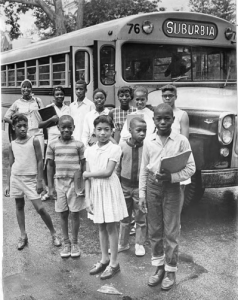Author: Courtney Chaloff
Ashley and Courtney’s Web Proposal
Through the eyes of a parent: Choosing a School in Hartford
The particular story we wish to tell is about school choice from the lens of Hartford parents. “Choice” is a reoccurring word and theme we’ve seen this semester in an abundance of literature, but what does it really mean? How much choice is too much? How do Hartford parents choose a school for their child and specifically what are the steps they take? What are the benefits that the parents receive choosing between schools? If parents take an inter-district approach, they have the option of magnet schools, open-choice and charter schools. These options, particularly open-choice and magnet schools were instilled as potential remedies for racial segregation in the Hartford regional schools. However, Hartford parents can choose to keep their kids within the district but there is still an application process. Where one lives in the city of Hartford does not mean you have to attend your neighborhood school, a slightly unfamiliar concept to some of Hartford’s neighboring suburbs. With all these options, how do Hartford parents conceptualize this process?
This story deserves it’s own web page to better understand the true meaning of choice in Hartford and if parents view it as a positive thing. In addition, the web page will walk through the potential steps Hartford parents could take as they decide a school. This process may overwhelm parents so our web page would almost be a step-by-step guide. Through our web page, parents would learn more about school choice in Hartford. By putting together a web page where not only the parents are able to learn about their options, but also get a better understanding of how to make sense of the system to better their child’s opportunity, we will open up a new area in the school choice websites: a parent friendly critique and guide through school choice. The intended audience of this page is Hartford parents who are in the process of choosing schools or maybe have already chosen a school for the child. The web page will be designed to help these parents simplify the steps and resources they have available to them as they choose a school.
The web page would feature the different websites (such as Hartfordschools.org, crec.org and greatschools.org/Connecticut) that are available to parents and how to navigate them. In addition, the web page would break down the somewhat complicated process of school-choice. This web page could also include a map showing all of the schools in the Hartford district to give parents a sense of how many schools there actually are in the district and region. An interactive feature of the web page will be a survey question asking what parents think of school choice in Hartford.
In regards to supplemental sources used for the web project, we are lucky to have a plethora of different options from Jack’s class. He has written some very eye-opening pieces such as, “School Choice in Suburbia: test scores, race, and housing markets.” An interesting piece that will also be helpful for this web project is Christina Ramsay et al. “Shopping for Homes and Schools: A qualitative study of West Hartford, Connecticut.” Additional sources include the Achieve Hartford, Connecticut Fair Housing, and handful of school choice websites, along with Jason Reece et al. piece, “People, Place and Opportunity: Mapping communities of opportunity in Connecticut.” These will give insight on the positives and negatives in society that are brought about by school choice, as well as being helpful in uncovering the truth and basis of our web project question: what does school choice really mean, and how much is too much?
Courtney Chaloff – Ex. 6

This picture depicts 12 African-American students in front of a bus in 1968. The bus reads, “Suburbia.” The children are from the Hartford area but are being bussed to suburbs to attend other schools. This photo shows attempts at school integration despite residential segregation. Because where you live determines where you go to school, bussing is necessary to get minority students who don’t have access to housing in better neighborhoods to higher quality schools. In the following video, Susan Hansen is enlightened of this housing segregation that existed in her neighborhood in the 1940s.
Source: Hansen, Susan. Oral history interview on West Hartford, CT and restrictive covenants (with video), by Candace Simpson for the Cities, Suburbs, and Schools Project, July 22, 2011.Available from theTrinity College Digital Repository, Hartford Connecticut (http://digitalrepository.trincoll.edu/cssp/).
The interviewer, Candace Simpson, reads Susan Hansen a racially restrictive property deed from West Hartford in the 1940s. The property deed explicitly said that “no persons of any race, except the white race, shall use or occupy any building on any lot.” Susan, extremely surprised and confused, says, “I’m shocked… I can’t even comprehend it…. its not something I would have expected in Connecticut at all” (3:50 – 4:05). This interview shows how many people were unaware that such blatant racism existed in housing. These discriminatory actions not only affected the housing market for minorities but also school choice. That is why the picture of bussing in the 1960s is so significant.

